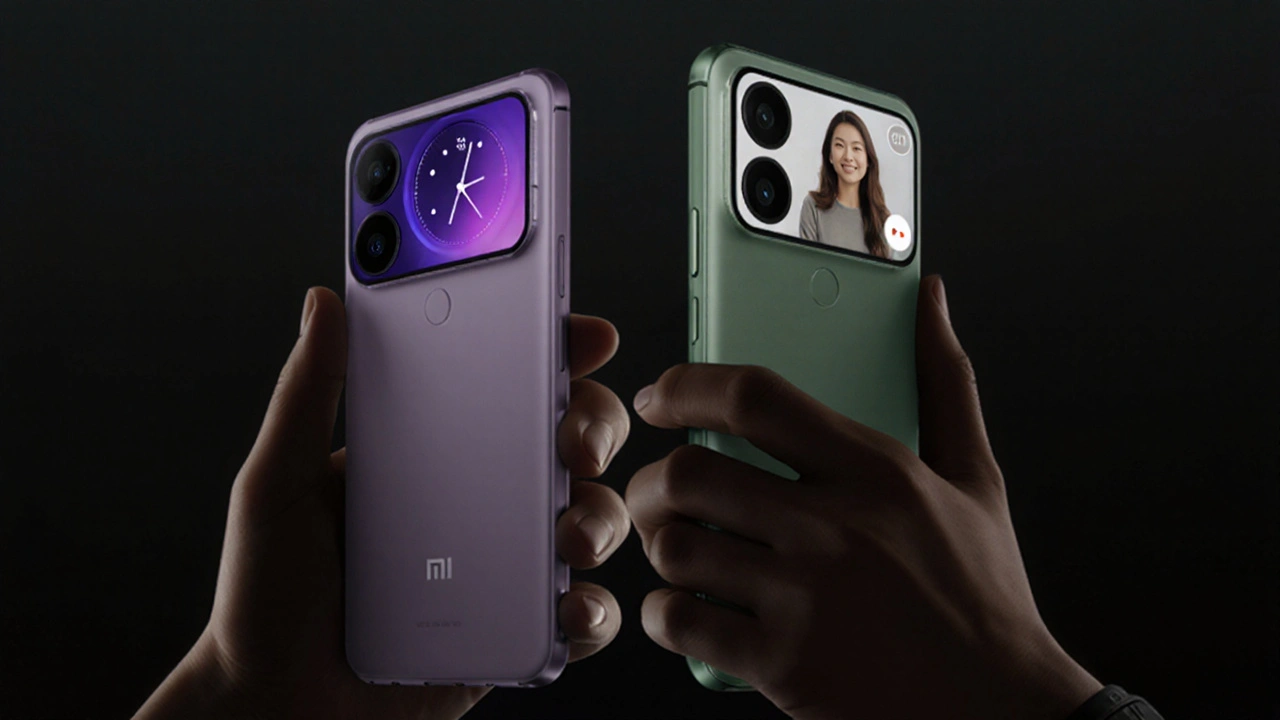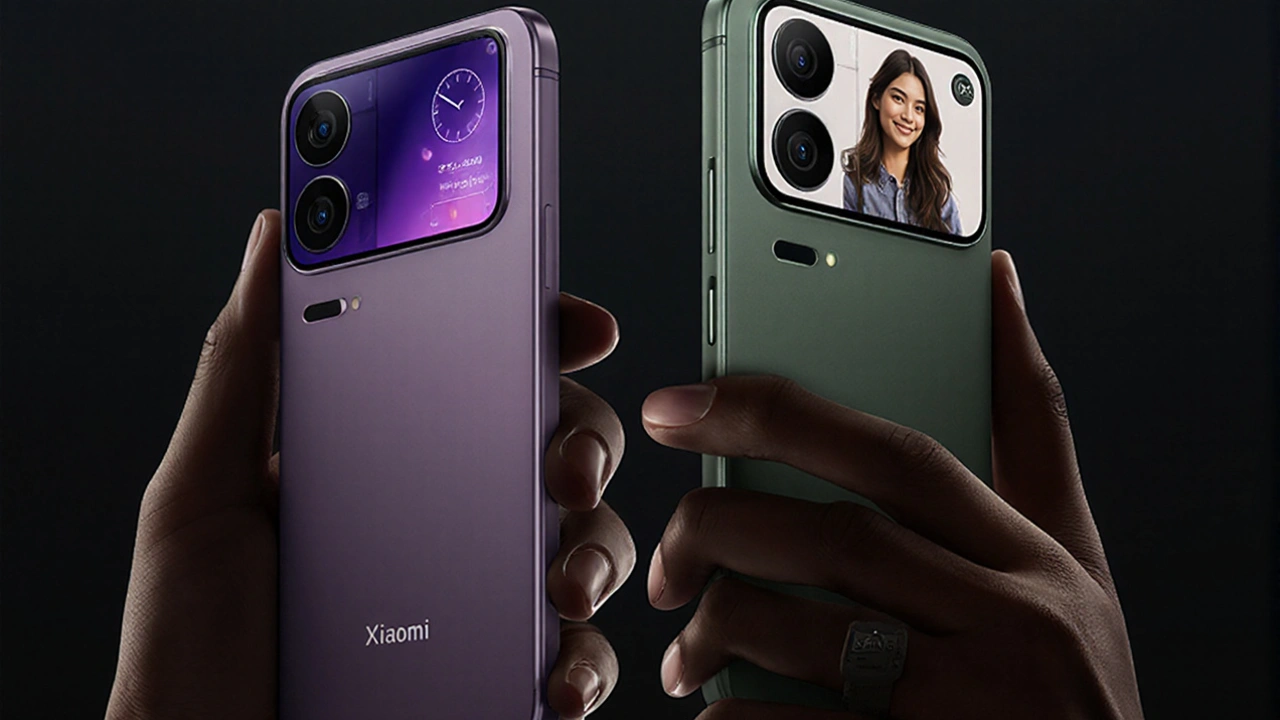Xiaomi 17 Series Debuts with Snapdragon 8 Elite Gen 5, Massive Batteries and Leica Cameras

What the Xiaomi 17 Series Brings to the Table
When Xiaomi rolled out the 17 lineup in September, the buzz was hard to miss. Three phones – the standard 17, the 17 Pro and the 17 Pro Max – all sit on the same Snapdragon 8 Elite Gen 5 chip, a processor that promises a noticeable jump in raw horsepower and efficiency over the previous Snapdragon 8 Gen 4. Think of it as moving from a sports sedan to a race‑ready hypercar overnight.
All three models share a common DNA: LPDDR5X memory that can stretch to 16 GB, and storage options that top out at a massive 1 TB of UFS 4.1. In real‑world terms, that means you’ll zip through heavy multitasking, gaming sessions, and 8K video editing without the dreaded lag spikes.
The displays reflect the tiered approach. The base 17 packs a 6.3‑inch 1.5K AMOLED panel that’s crisp enough for binge‑watching, while the Pro Max flaunts a 6.9‑inch screen that pushes the envelope of immersive viewing. Both screens retain high refresh rates and HDR support, so colours stay vivid whether you’re scrolling Instagram or fine‑tuning a photo.
Running on HyperOS 3 – Xiaomi’s newest skin built on Android 16 – the phones inherit the latest OS‑level privacy tweaks, smoother UI animations, and a slew of AI‑driven features like on‑device translation and adaptive battery management. For anyone who’s felt the sting of a bloated OS, HyperOS feels surprisingly lean.

How the Specs Stack Up Against Competitors
Battery life is where the 17 series tries to out‑run the competition. The base model houses a 7000 mAh “Xiaomi Surge” cell, the Pro sits at 6300 mAh, and the Pro Max pushes to a whopping 7500 mAh. That’s enough juice to comfortably last two days of heavy use, a claim that feels plausible given the efficiency gains of the Gen 5 chipset.
Camera lovers will notice the continuation of Xiaomi’s partnership with Leica. All three phones sport a triple‑lens array centered around a 50 MP sensor, complemented by a 5× optical zoom lens and a dedicated ultra‑wide module. Leica’s colour science shines through – skin tones look natural, and low‑light shots retain detail without the usual noise.
Price positioning is where Xiaomi gets clever. While Apple and Samsung’s top‑end flagships often breach the $1,200 mark, the 17 Pro Max’s flagship‑spec configuration (16 GB RAM, 1 TB storage) is expected to launch at a lower price point, keeping the brand’s reputation for delivering value. Early market leaks suggest a starting price around $899 in the US, with the Pro and base models sliding further down.
Geographically, Xiaomi isn’t just banking on China. The firm has already confirmed roll‑outs in India, Europe and select Southeast Asian markets. The strategy mirrors its past playbook: launch globally, then fine‑tune supply chains to keep costs low while meeting local demand.
Beyond the headline specs, there are a few subtler upgrades worth noting. The phones support Widevine Level 1 DRM, meaning Netflix, Amazon Prime and other streaming services will deliver full‑HD or even 4K content without compromise. OTA updates are promised for three years, a lifespan that rivals more premium brands.
In terms of design, Xiaomi sticks to its refined aesthetic – glass back, aluminium frame, and a subtle gradient colour palette that feels premium without being flashy. The Pro Max even offers a matte finish option for those who dislike fingerprints on glossy surfaces.
Overall, the Xiaomi 17 series feels like a calculated gamble: leverage bleeding‑edge hardware, keep the user experience smooth with HyperOS, and price it aggressively to win over power users and budget‑conscious shoppers alike. If the phones live up to the specs, they could reshape the balance of power in the flagship arena for the coming year.

Suman Sourav Prasad
September 29, 2025 AT 00:34Nupur Anand
September 29, 2025 AT 20:50Vivek Pujari
September 30, 2025 AT 20:05Ajay baindara
October 2, 2025 AT 12:04mohd Fidz09
October 2, 2025 AT 20:30Rupesh Nandha
October 4, 2025 AT 13:19suraj rangankar
October 5, 2025 AT 19:56Nadeem Ahmad
October 5, 2025 AT 21:31Aravinda Arkaje
October 6, 2025 AT 16:32kunal Dutta
October 7, 2025 AT 01:05Yogita Bhat
October 8, 2025 AT 11:22Tanya Srivastava
October 9, 2025 AT 05:51Ankur Mittal
October 9, 2025 AT 07:07Diksha Sharma
October 10, 2025 AT 23:52Akshat goyal
October 12, 2025 AT 13:53anand verma
October 14, 2025 AT 11:44Amrit Moghariya
October 15, 2025 AT 22:48